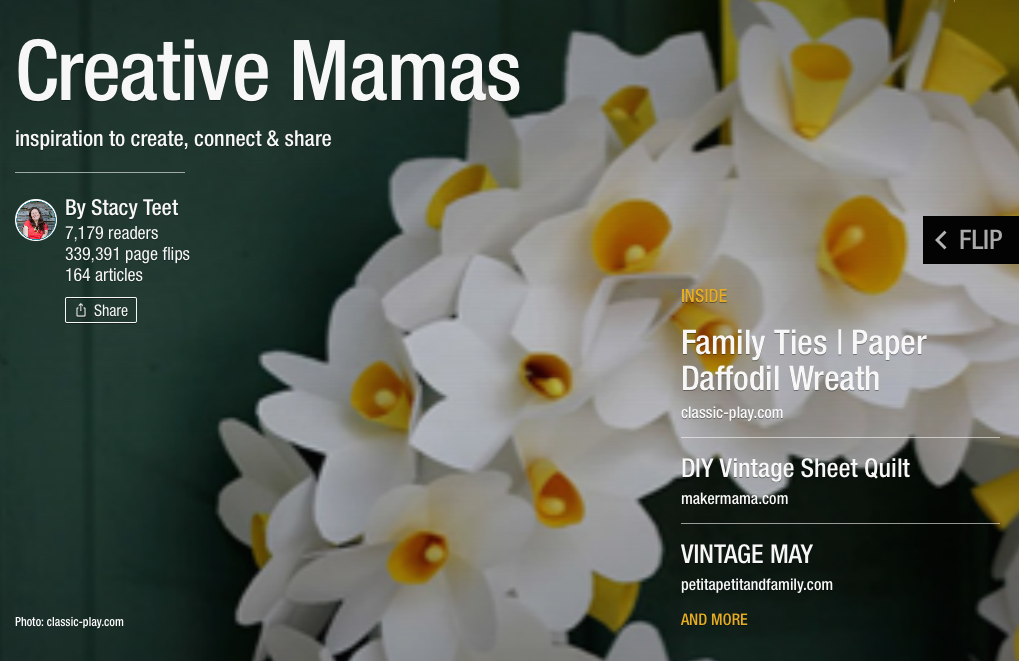It doesn’t matter if you’re writing a blog, sharing photos, posting social updates, or curating a magazine on Flipboard: if you want to attract an audience, there’s one thing you absolutely must do: You have to be interesting.
Sure it’s obvious. But if it were easy, everyone would be a media superstar. So what’s the secret to interestingness?
That turns out to be pretty simple too: Pick a topic you’re passionate about, then concentrate on it intensely. “When I curate on Flipboard, I like to start with things people are already familiar with, then bring a unique perspective to it,” says MagMaker Stacy Teet, who curates a rather interesting set of Flipboard magazines. “That’s where it starts to pay off. You learn a lot about your own eye, and your own style, and you should embrace that. Your audience will appreciate it as well.”
That’s a rock-solid approach. Here’s how you actually do it:
1. Focus, Focus, Focus
Give your magazine a clear topic. The more specific, the better. On Flipboard, readers respond best to magazines that provide consistent, focused treatment of a subject (or a set of subjects). Interesting magazines attract people who have similar interests, so it’s important to define them as precisely as possible. Don’t settle for broad, catch-all subjects. Go deeper. The more precisely you define your topic, the more clearly it will resonate with readers who share your enthusiasm. That’s what makes Ondrej Chudy’s Minimalist Houses magazine effective; it’s an architecture magazine with a specific sense of style:
 2. Avoid General Topics
Why should you avoid those broad, catch-all topics? It’s because you don’t want to fall into the Generality Trap. On curation-based platforms like Flipboard, it’s easy to build collections around broad topics like “Food” or “Crafts” or “Travel.” (And lots of people do.) General topics are great if you’re curating a collection for your own reference, but if you want to build an audience, general topics don’t give readers much to get excited about. That’s what makes Victor Moruzzi’s Bowls of Happiness so enticing; it’s a recipe magazine with a clear emphasis on comfort food:
2. Avoid General Topics
Why should you avoid those broad, catch-all topics? It’s because you don’t want to fall into the Generality Trap. On curation-based platforms like Flipboard, it’s easy to build collections around broad topics like “Food” or “Crafts” or “Travel.” (And lots of people do.) General topics are great if you’re curating a collection for your own reference, but if you want to build an audience, general topics don’t give readers much to get excited about. That’s what makes Victor Moruzzi’s Bowls of Happiness so enticing; it’s a recipe magazine with a clear emphasis on comfort food:
 3. Cultivate a Point of View
Point of view is similar to focus, but slightly more abstract. Point of view is the perspective and tone you bring to a subject. Point of view can be funny, or serious, or tough, or sensitive, or cheerful, or pessimistic, or young or refined, or any combination of those, or many more things — but most of all, it’s the editorial filter that explains why two different magazines about the exact same subject can still feel very, very different. Just like topical focus, it works best when applied consistently. That’s how Hassaan Abdeen transformed Unconventional Boss from a collection of career tips into a magazine that feels like a rallying cry:
3. Cultivate a Point of View
Point of view is similar to focus, but slightly more abstract. Point of view is the perspective and tone you bring to a subject. Point of view can be funny, or serious, or tough, or sensitive, or cheerful, or pessimistic, or young or refined, or any combination of those, or many more things — but most of all, it’s the editorial filter that explains why two different magazines about the exact same subject can still feel very, very different. Just like topical focus, it works best when applied consistently. That’s how Hassaan Abdeen transformed Unconventional Boss from a collection of career tips into a magazine that feels like a rallying cry:
 4. Be Unique
Being unique doesn’t have to involve being flashy or outrageous (though there’s nothing wrong with that either). Unique is the kind of distinctiveness that feels like a special experience. Stacy Teet believes it means aiming high. “You have to wow them, how them or holy cow them,” she says. “That means show them something they probably haven’t seen before, teach them something they didn’t know or blow them away with something so amazing they have no choice but to share it.” In other words: Just be interesting. Stacy does that like a pro in her Creative Mamas magazine:
4. Be Unique
Being unique doesn’t have to involve being flashy or outrageous (though there’s nothing wrong with that either). Unique is the kind of distinctiveness that feels like a special experience. Stacy Teet believes it means aiming high. “You have to wow them, how them or holy cow them,” she says. “That means show them something they probably haven’t seen before, teach them something they didn’t know or blow them away with something so amazing they have no choice but to share it.” In other words: Just be interesting. Stacy does that like a pro in her Creative Mamas magazine:
 IMAGE, TOP: Shown on the cover, Things That Are Interesting magazine by Joe Toohey
IMAGE, TOP: Shown on the cover, Things That Are Interesting magazine by Joe Toohey
